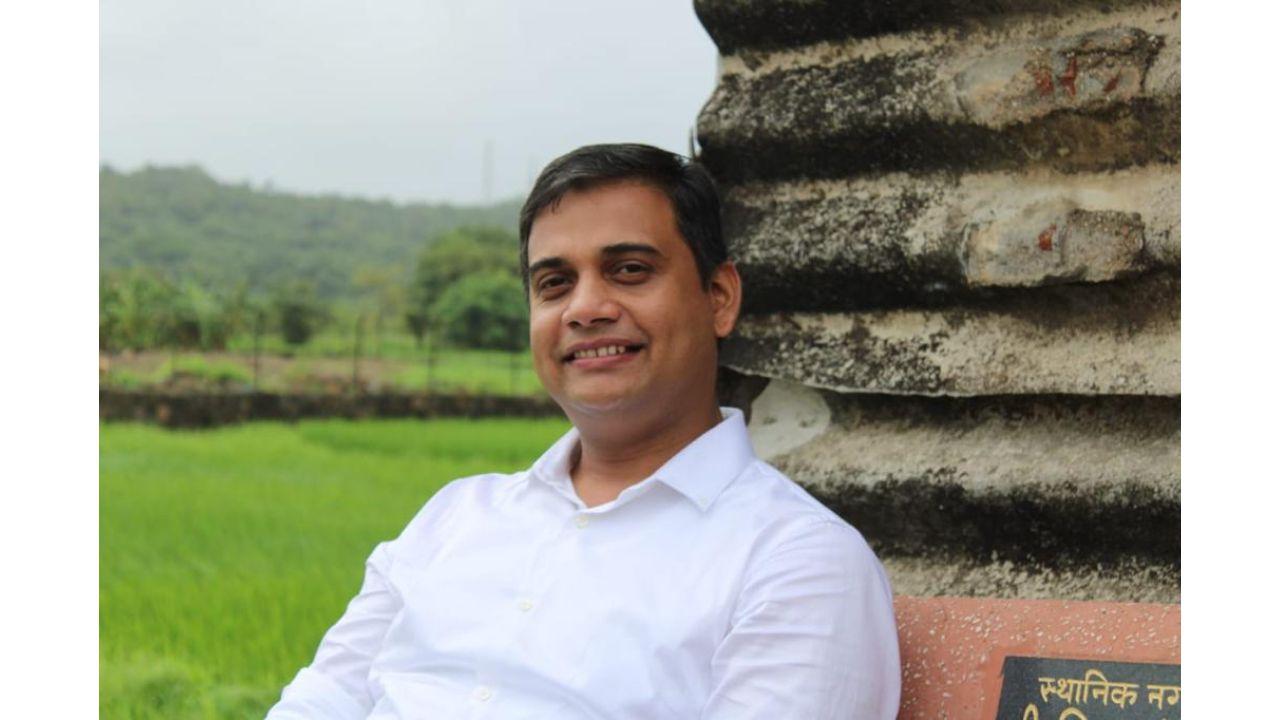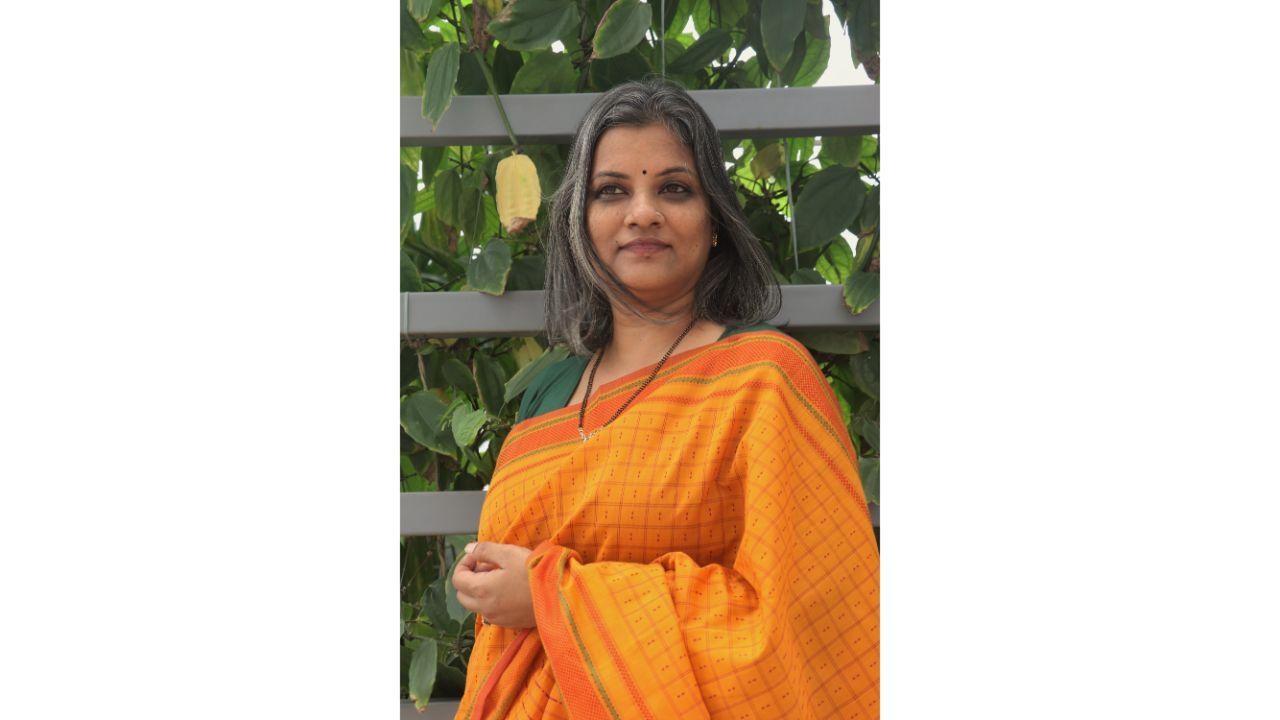City-based tour guide Mogan Rodrigues and textile heritage expert Savita Suri have teamed up to recreate a vintage sari called the ‘lugra’. Their effort could sow the seeds for wider textile revival in Maharashtra

Mogan Rodrigues's maternal grandmother's lugra which she received in 1941. Photo: Savita Suri
For Mogan Rodrigues, preserving his East Indian culture is an urgent priority. “There are many aspects of it that are unknown,” rues the city-based travel guide, “not only to people outside the city but also within it”. While he generally dabbles with food and culture in his walking tours, a meeting with textile heritage expert Savita Suri just before the pandemic last year shifted that focus. In their conversation, Suri pointed out the similarities between the Goan kunbi sari, which she had revived not long ago, and the East Indian lugra, which has been disappearing from wardrobes and memories in the last 50 years.
Indeed, Rodrigues realised there was a dearth of places that still made the traditional garment, known as lugra in the East Indian Marathi dialect, or lugda in Marathi. This nine-yard or ten-yard sari, usually made from red or green silk cotton, once held special significance in the marriages of his community, whose people are considered as one of the original inhabitants of Mumbai. It was gifted by the groom and worn by the bride the day after her wedding in a ceremony called ‘Pathpathkar’ or ‘Passpaatni’, when her family and relatives would come to take her back to her father’s house. Western-style gowns or the commonly-available ‘sara’ (an East Indian version of the Maharashtrian shalu sari) came to be used instead. As it happens, the lugra is found in few homes anymore, preserved by some mothers or grandmothers.
“I thought to myself why don’t I revive the East Indian lugra. Since I am not a handloom and textile expert, I reached out to Savita again and we started working on it,” recalls Rodrigues. Suri had initially wanted to study and document this sari as one among the various rich textiles of Maharashtra, but Rodrigues — driven by personal sentiment —insisted on actually having a sari recreated for his family. There was, however, a challenge. Making such apiece for just one family would have been too expensive and unviable. They needed economy of scale.
 City-based tour guide Mogan Rodrigues
City-based tour guide Mogan Rodrigues
Call for revival
That is where Suri’s business acumen helped. Fortuitously, in 2020, Suri also took over as the president of the Women's Indian Chamber of Commerce and Industry (WICCI) Maharashtra Handloom Council. She realised there was potential in starting a state-wide textile revival initiative. As Rodrigues and Suri were already involved in extensively studying the East Indian lugra, the resurrection of that style has been named the pilot project of a broader Textile Revival Initiative, launched by the council on May 1 this year.
The project is non-profit and crowdfunded, explains Suri. “We first put the story out and then take the orders with advances, and then we have the saris woven for them. This helps us manage production and finance. More importantly, it helps the person who is buying to better understand the textile and the heritage too.” There are many theories about the sari in question, which was mainly available in red and green. Different regions in the city had different lengths of the sari, for instance. To get their understanding of the fabric right, Rodrigues set out to find as many samples as he could.
In the course of that process, he discovered a gem sitting in his family home. “I found my grandmother’s lugra which is as old as 1941. After asking a few people around, I also got one that is 90 years old. We understood that the nine-yard sari is the most popular and oldest kind to be found,” Rodrigues says with excitement. “The six-yard one is a normal sari but there is a distinct difference as it has only one ‘pallu’ (decorated end) whereas the nine-yard and 10-yard lugras have two ‘pallus’,” adds the 42-year-old Uttan resident, who has been conducting guided tours since 2004.
Out of the various samples collected, Suri and her team of technical experts picked out three for closer observation of the fabric and its intricacies. “We finally zeroed in on Mogan’s grandmother’s lugra for multiple reasons –- it was cost-effective and made of silk cotton.”

Savita Suri, president of the WICCI Maharashtra Handloom Council
Grandmother’s special
Rodrigues's maternal grandmother, Christine Hendriques, passed away a little over 10 years ago but her memory will live on through her sari. Based on Suri’s textile know-how and his cultural expertise, an almost exact replica of her delicate red sari — in terms of the weight, colour, strength — will be recreated by weavers in north Karnataka. It was as if this project was meant to be, says Rodrigues, because the women of his culture typically received only one lugra. “Usually, when an East Indian woman passes away, they drape her in the lugra before she is placed in the coffin. So, it is really surprising that I found (my grandmother’s) lugra, but I am happy as it will help to revive the textile.”
The weavers informed the duo they would need a minimum of 30 orders. “So Mogan and I decided that we will make 10 nauvaris and 20 six-yard saris because the nauvari is needed for the East Indian drape and the six-yard is normally worn otherwise.” But the WICCI Maharashtra Handloom Council got as many as 45 requests in the first two hours and had to stop taking orders at 80. Woven using throw shuttles on a pit loom, in cotton (warp)and silk (weft), these saris were sold for Rs 4,500 and Rs 5,900 per piece for the six and nine yards respectively. “It gives the weavers over eight to nine months of work,” says Suri, who is also working on a book about East Indian heritage textiles, which she hopes will be ready by the time the saris go out. The book is an attempt to educate everybody about the heritage of the textile they own.
Seed of change
“If you look at the kunbi and the lugra, they are like two cousins who are finally coming into the limelight,” notes Suri, who had also restored the former -- a traditional Goan sari -- in the last five years. She hopes this will also be the start for many more such revivals in Maharashtra. They will particularly be reviving the sonkari lugra, which has a golden shine, and will likely bring back a more expensive variety with zari next.
Such a project could not have taken off without Rodrigues’s interest in his community, Suri notes. “I hope it is the start to a meaningful revival, as we are being mindful and do not want to appropriate the culture. In addition to a nine-yard, we will also make a six-yard sari so that it is there for East Indian women as well as others who want to wear it the normal way. But that does not mean we will mess with the colour or the border design,” observes Suri, for whom this has been an illuminating experience even though she is herself a Mumbaikar. “Revivals are considered to be expensive but we are saying that revivals have to be affordable because we are giving back to the community a piece of its own history.”
Also Read: Mumbai’s East Indian community love their bottle masala, but they love their mangoes too
 Subscribe today by clicking the link and stay updated with the latest news!" Click here!
Subscribe today by clicking the link and stay updated with the latest news!" Click here!










